Configuring Prometheus, Grafana, and Node Exporter on Amazon EC2 Ubuntu using Docker
 Siddhant Bhattarai
Siddhant Bhattarai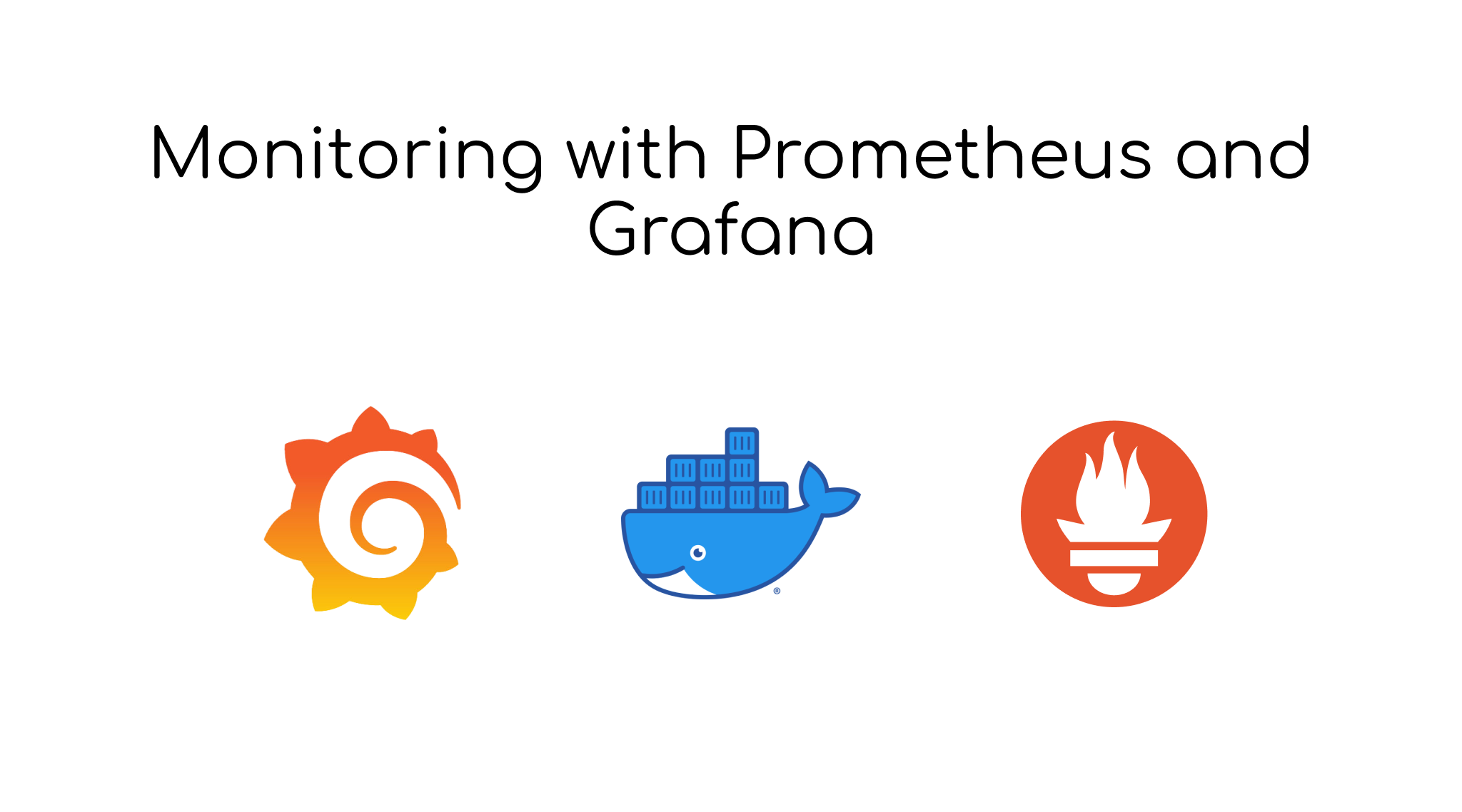
Setting Up Your EC2 Instance
Launch an EC2 instance with the desired specifications (e.g., t2.medium, 30GB storage and security group with inbound rule ssh, 9100, 9090, 3000 port open).
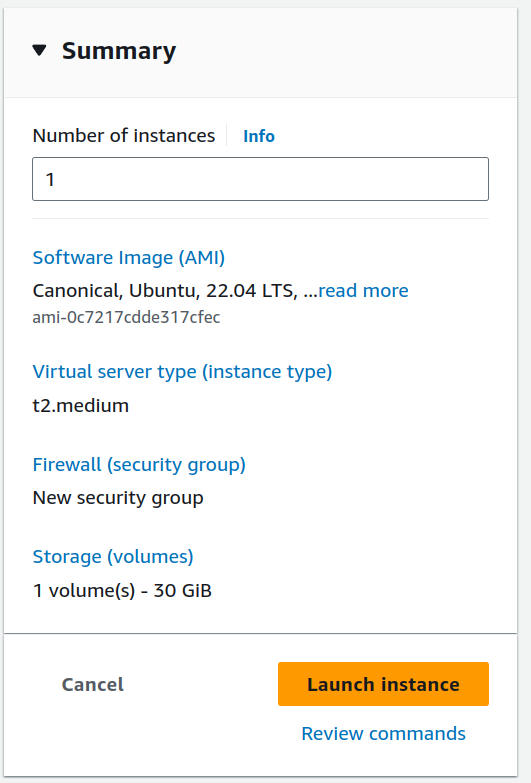
Connect to your EC2 instance using SSH.
ssh -i your-key.pem ubuntu@your-ec2-ip
Update the Linux System and Install Docker
Ensure your system is up to date and install Docker:
sudo apt update
sudo apt install -y docker.io
Install Docker Compose
Install Docker Compose:
sudo apt install -y docker-compose
Adjust Docker Permissions
Adjust Docker permissions to allow the current user to access the Docker daemon:
sudo chown $USER /var/run/docker.sock
Setting Up Directory Structure
Create a directory structure for Docker containers:
mkdir Docker_Container
cd Docker_Container
mkdir grafana prometheus node-exporter
Prometheus Configuration
Create a docker-compose.yml file in the prometheus directory:
cd prometheus
mkdir prometheus
nano docker-compose.yml
Copy the below yaml file & paste in docker-compose.yml then save the file.
version: '3.8'
# Define the services
services:
# Prometheus service for monitoring and alerting
prometheus:
# Use the official Prometheus Docker image
image: prom/prometheus
# Define the container name
container_name: prometheus
# Command to specify Prometheus configuration file
command:
- '--config.file=/etc/prometheus/prometheus.yml'
# Expose Prometheus's web interface on port 9090
ports:
- "9090:9090"
# Ensure the container restarts unless explicitly stopped
restart: unless-stopped
# Mount Prometheus's configuration and data volumes
volumes:
- ./prometheus:/etc/prometheus
- prom_data:/prometheus
# Define the volume for Prometheus's data storage
volumes:
prom_data:
Create a prometheus.yml file in the prometheus directory:
cd prometheus
nano prometheus.yml
Copy the below yaml file & paste in prometheus.yml change target-ip to your server-ip then save the file.
# Global configuration for Prometheus
global:
# How frequently to scrape targets by default
scrape_interval: 15s
# Timeout for individual scrape requests
scrape_timeout: 10s
# How frequently to evaluate rules by default
evaluation_interval: 15s
# Alerting configuration
alerting:
# Configuration for Alertmanager
alertmanagers:
- static_configs:
# No targets defined for Alertmanager
- targets: []
scheme: http
timeout: 10s
api_version: v2 # update to lates version if you got error
# Scrape configurations for monitoring targets
scrape_configs:
# Job configuration for scraping Prometheus itself
- job_name: prometheus
honor_timestamps: true
scrape_interval: 15s
scrape_timeout: 10s
metrics_path: /metrics
scheme: http
static_configs:
# Targeting localhost where Prometheus is running
- targets:
- localhost:9090
# Job configuration for scraping the my_application service
- job_name: my_application
static_configs:
# Targeting the IP and port of the my_application service
- targets: ['target-ip:9100']
Grafana Configuration
cd /home/ubuntu/Docker_Container/grafana
nano docker-compose.yml
Create a docker-compose.yml file in the grafana directory, paste the following yaml file and save it:
version: '3.8'
# Define the services
services:
# Grafana service for data visualization
grafana:
# Use the official Grafana Docker image
image: grafana/grafana
# Define the container name
container_name: grafana
# Ensure the container restarts unless explicitly stopped
restart: unless-stopped
# Expose Grafana's web interface on port 3000
ports:
- "3000:3000"
# Mount Grafana's storage volume
volumes:
- grafana-storage:/var/lib/grafana
# Define the volume for Grafana's data storage
volumes:
grafana-storage:
Setting Up Node Exporter
Download Node Exporter
cd /home/ubuntu/Docker_Container/node-exporter/
Download Node Exporter using wget:
wget https://github.com/prometheus/node_exporter/releases/download/v1.7.0/node_exporter-1.7.0.linux-amd64.tar.gz
Note: Ensure you are using the latest version of Node Exporter and the correct architecture build for your server. The provided link is for amd64. For the latest releases, check here - Prometheus Node Exporter Releases
Extract and Move Binary
Extract the contents and move the Node Exporter binary:
tar xvf node_exporter-1.7.0.linux-amd64.tar.gz
cd node_exporter-1.7.0.linux-amd64
sudo cp node_exporter /usr/local/bin
cd ..
rm -rf ./node_exporter-1.7.0.linux-amd64
Create Node Exporter User
Create a dedicated user for running Node Exporter:
sudo useradd --no-create-home --shell /bin/false node_exporter
sudo chown node_exporter:node_exporter /usr/local/bin/node_exporter
Configure the Service
Create a systemd service for Node Exporter:
sudo nano /etc/systemd/system/node_exporter.service
Paste the following configuration:
[Unit]
Description=Node Exporter
Wants=network-online.target
After=network-online.target
[Service]
User=node_exporter
Group=node_exporter
Type=simple
ExecStart=/usr/local/bin/node_exporter
Restart=always
RestartSec=3
[Install]
WantedBy=multi-user.target
Save and exit the editor.
Enable and Start the Service
Reload the systemd daemon, enable, and start the Node Exporter service:
sudo systemctl daemon-reload
sudo systemctl enable node_exporter
sudo systemctl start node_exporter
To confirm the service is running properly, check its status:
sudo systemctl status node_exporter.service
cd /home/ubuntu/Docker_Container/prometheus
docker-compose up -d
cd /home/ubuntu/Docker_Container/grafana
docker-compose up -d
docker ps

Copy the ip address of ec2 web server and paste in browser:
http://your_server_ip_address:9090 for Prometheus

http://your_server_ip_address:3000 for grafana
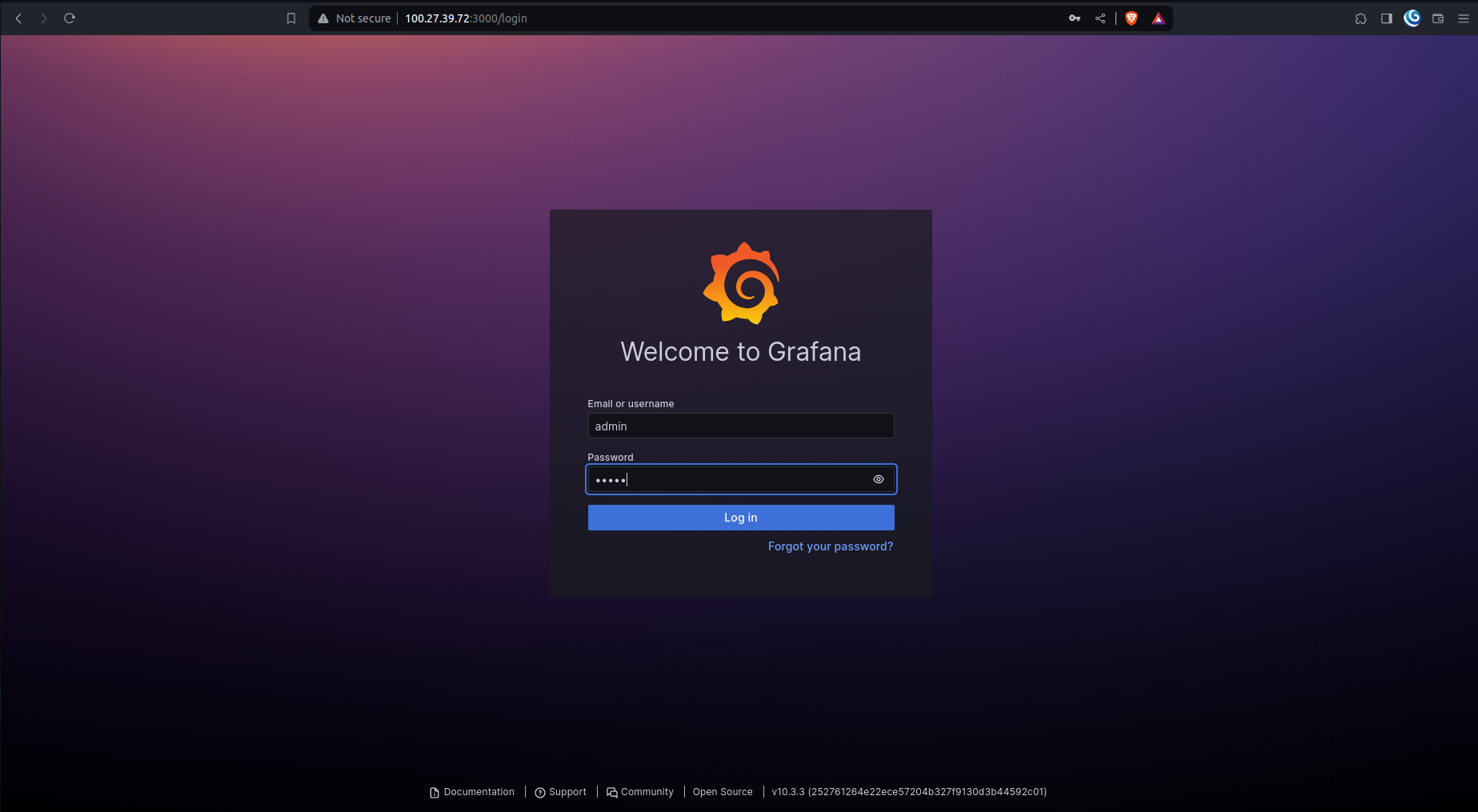
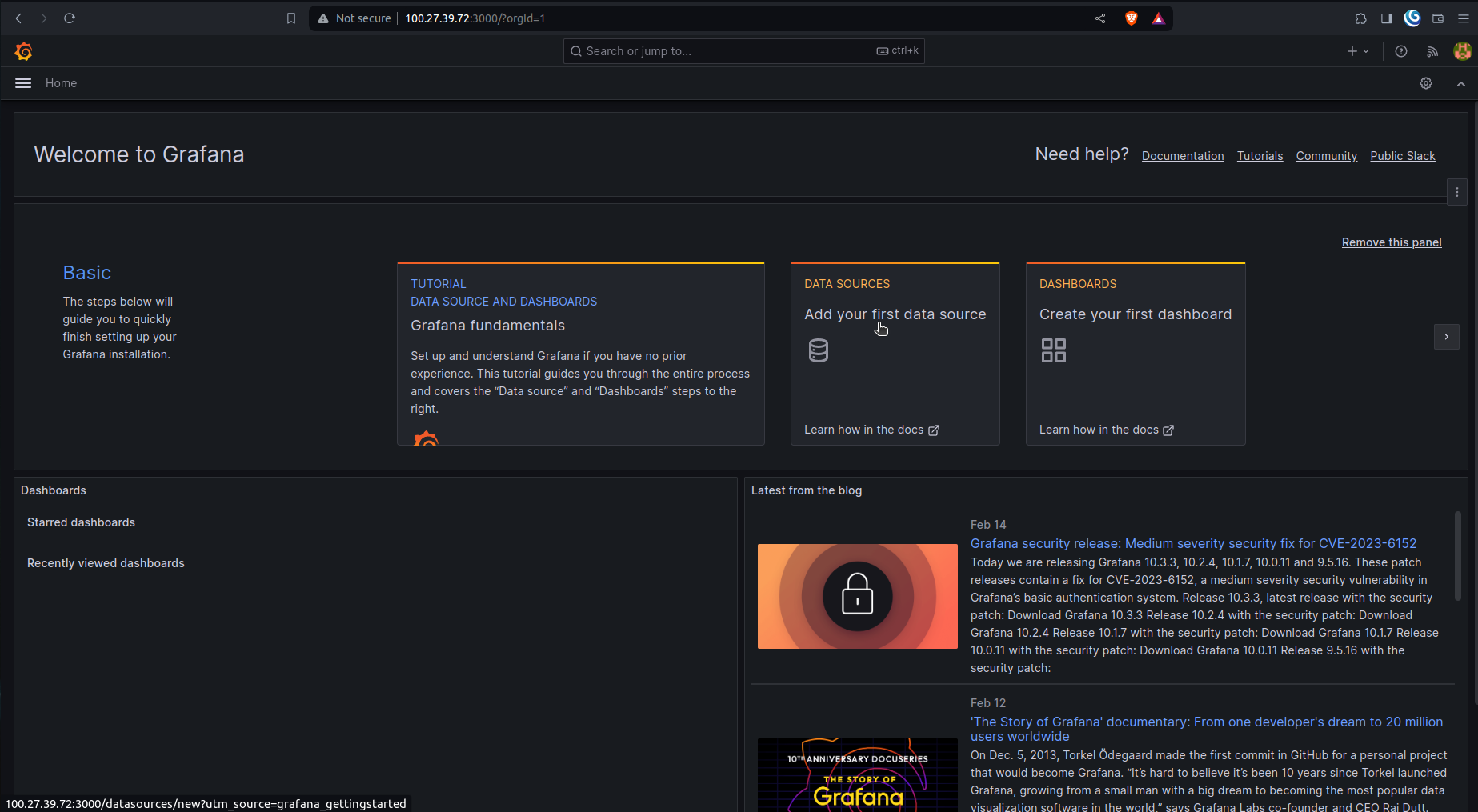
Add the data source:
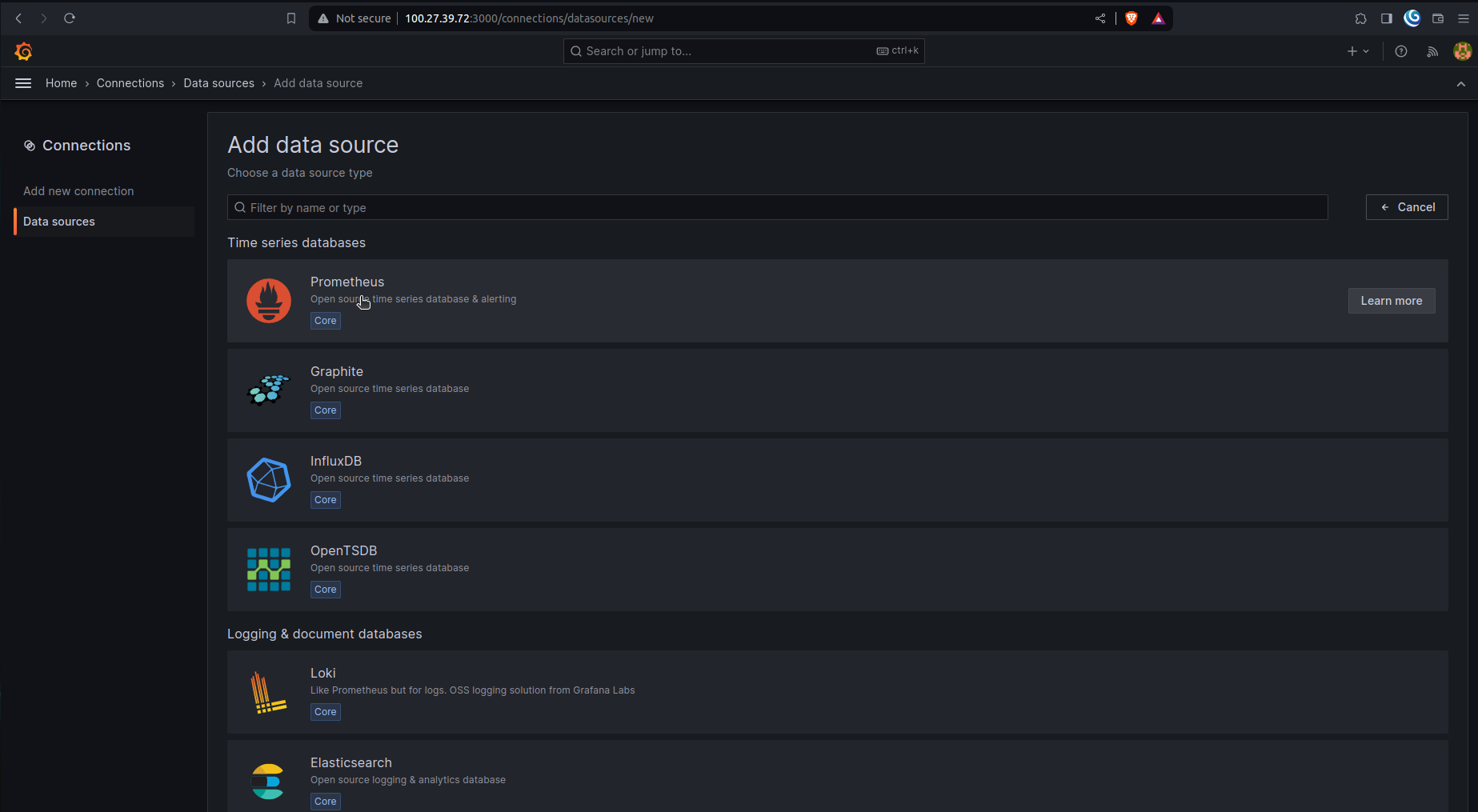
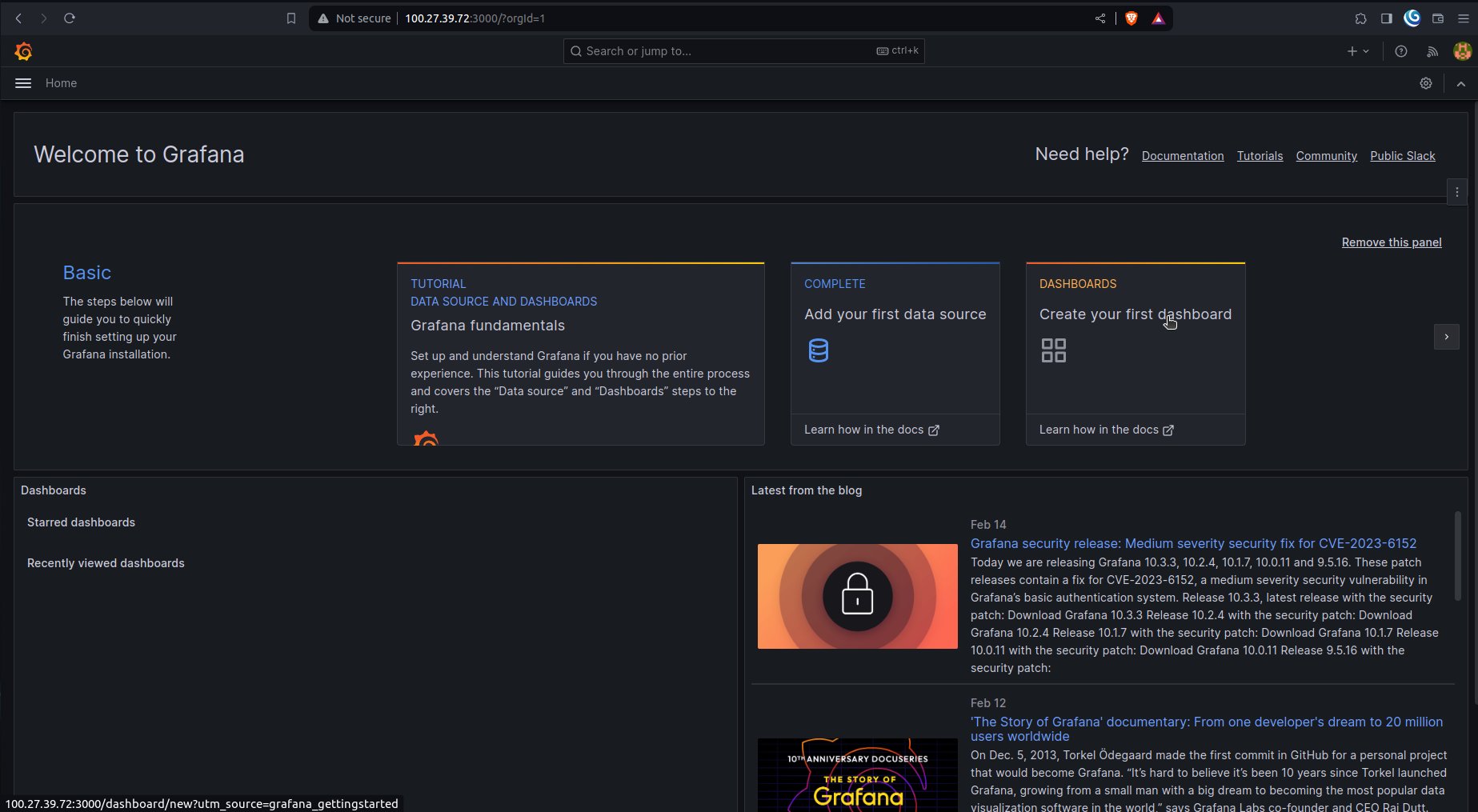
Create a Dashboard:
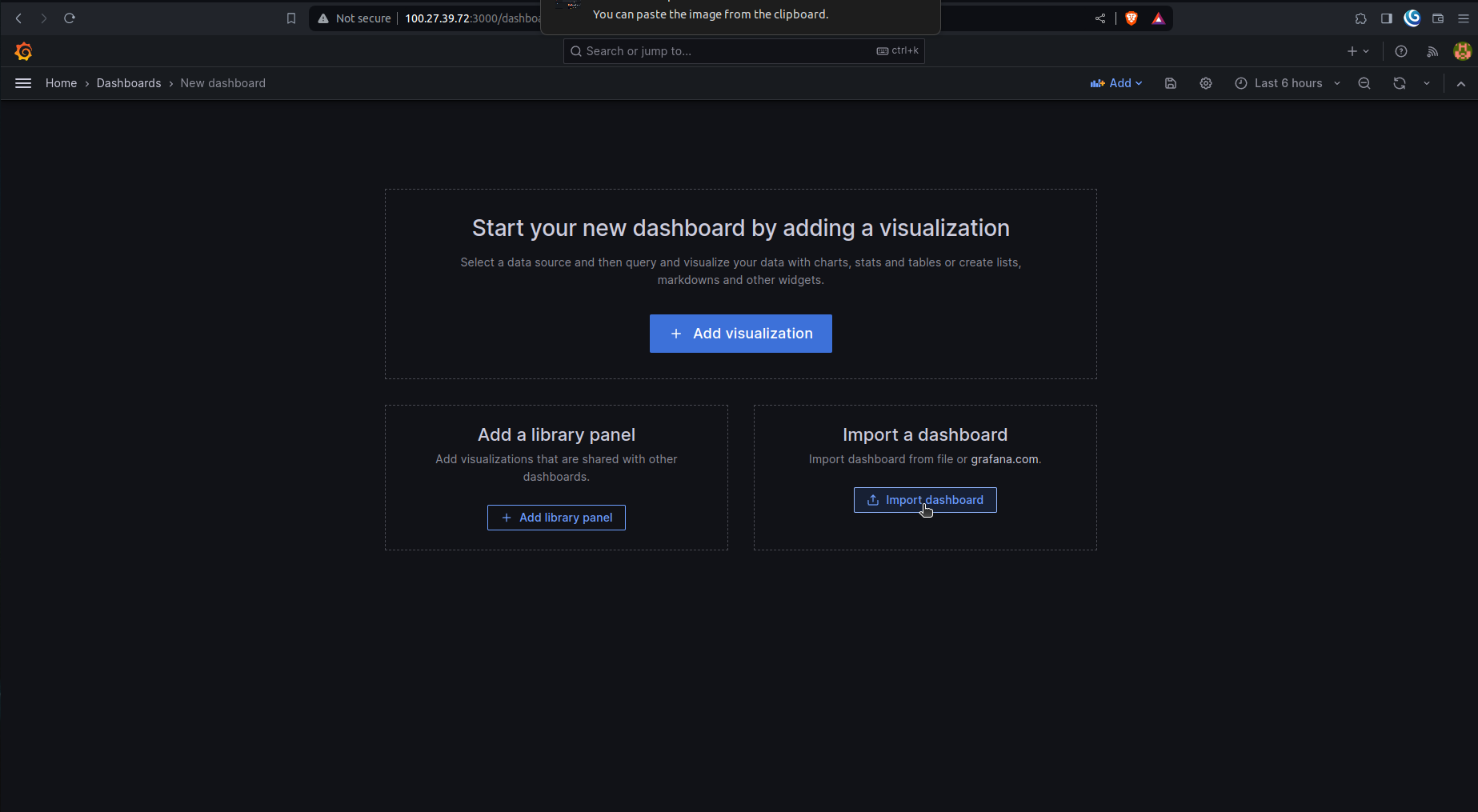
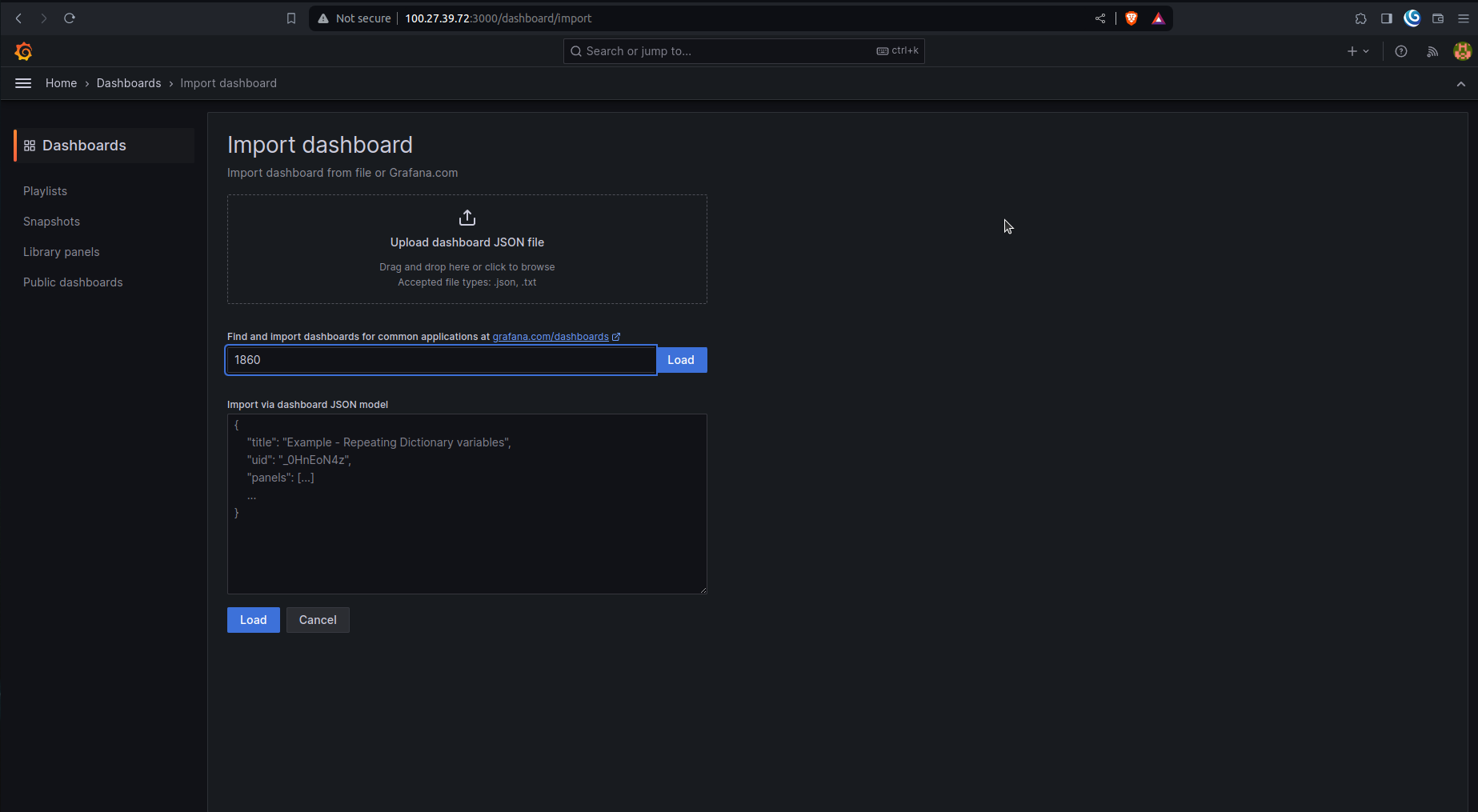
1860 is the dashboard id for Node Exporter Full data source:
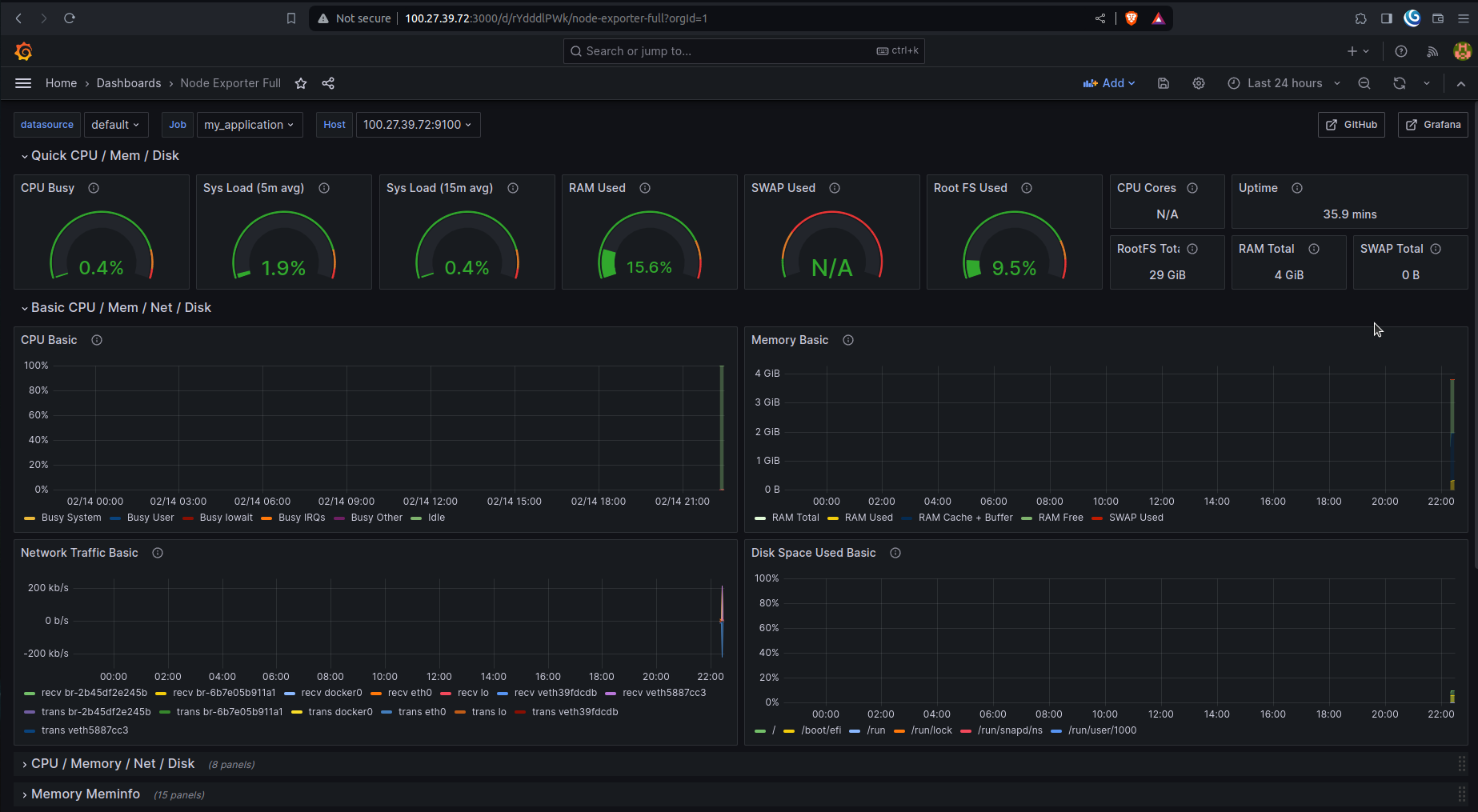
This guide should help you set up Prometheus, Grafana, and Node Exporter on your Amazon EC2 instance running Ubuntu using Docker. Adjustments can be made as needed for your specific environment.
In conclusion, this guide provides a comprehensive walk through for configuring Prometheus, Grafana, and Node Exporter on an Amazon EC2 Ubuntu instance using Docker. By following these steps, you can effectively monitor your system's performance metrics and visualize the data through Grafana's intuitive dashboard capabilities.
Here's a brief summary of the key points covered:
System Preparation: Ensure your Ubuntu system is up to date, install Docker and Docker Compose, and adjust Docker permissions to facilitate easy container management.
Directory Structure Setup: Organize your Docker setup by creating separate directories for Prometheus, Grafana, and Node Exporter within a parent directory named
Docker_Container.Prometheus Configuration: Create a
docker-compose.ymlfile for Prometheus, specifying its image, container name, ports for web interface access, and volumes for configuration and data storage.Grafana Configuration: Similarly, set up a
docker-compose.ymlfile for Grafana, defining its image, container name, ports for web interface access, and volumes for data storage.Node Exporter Installation: Download and install Node Exporter, create a dedicated user for running it, configure a systemd service to ensure automatic startup, and verify its status to ensure proper functionality.
By following these steps, you'll establish a robust monitoring and visualization environment, empowering you to gain valuable insights into your system's performance and health. With Prometheus collecting metrics, Grafana presenting them in visually appealing dashboards, and Node Exporter providing system-level data, you'll have a powerful toolkit at your disposal for effective monitoring and troubleshooting.
References:
Subscribe to my newsletter
Read articles from Siddhant Bhattarai directly inside your inbox. Subscribe to the newsletter, and don't miss out.
Written by

Siddhant Bhattarai
Siddhant Bhattarai
I am a versatile professional with expertise in multiple domains, including DevSecOps, AWS Cloud Solutions, AI/ML, and Cyber Security. With over 5 years of experience in the field, I have honed my skills and dedicated myself to various roles and responsibilities. If you're looking for opportunities for collaboration, insights, or exciting ventures in these domains, I'm open to connecting. Please don't hesitate to reach out – I'm excited to engage with professionals, learners, and enthusiasts who share my passion for these fields!